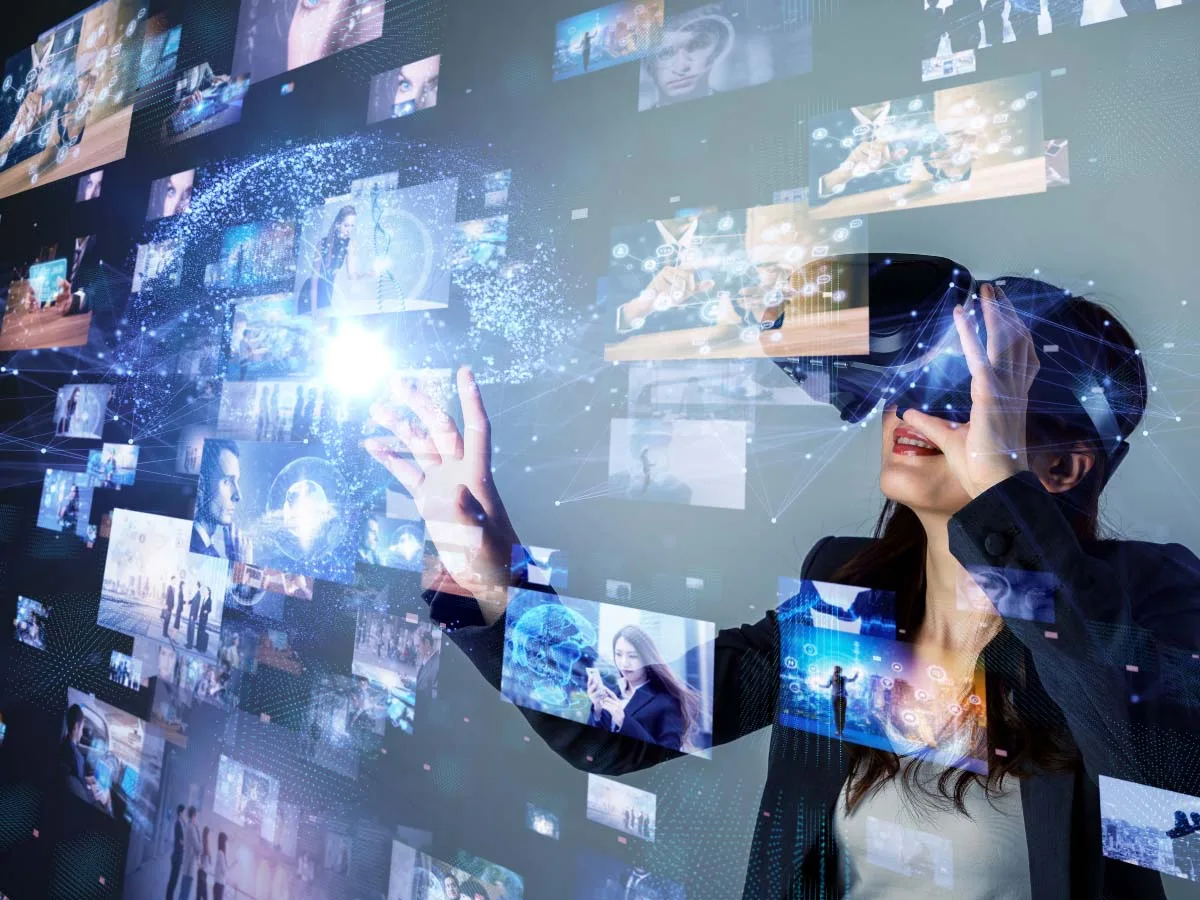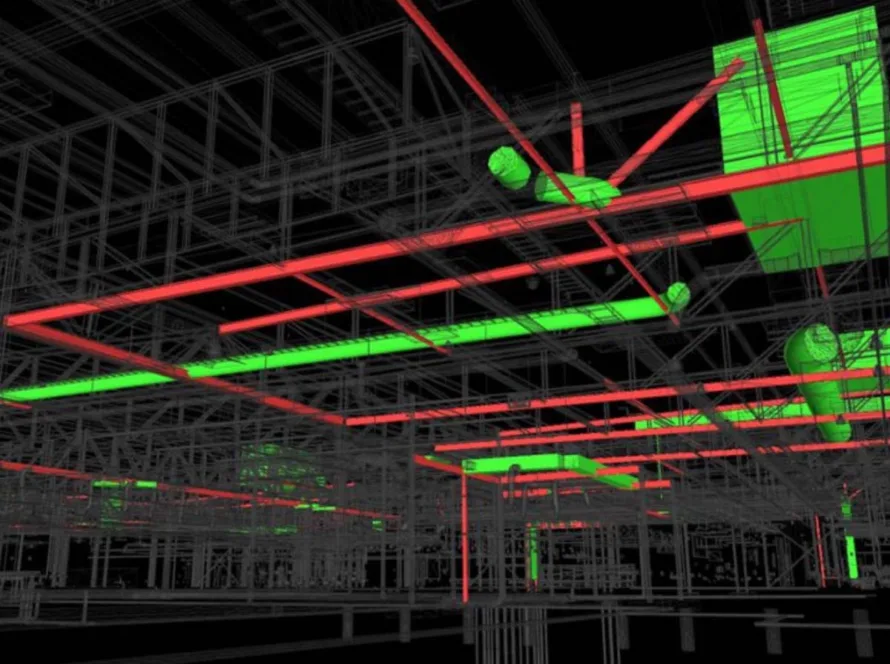Introduction
BIM and virtual reality are not synonymous with one another, but they do complement one another. Building Information Modeling (BIM) and Virtual Reality (VR) are two distinct technologies commonly used in the architecture, engineering, and construction (AEC) industry, but they are increasingly becoming intertwined due to their complementary capabilities.
BIM involves creating digital representations of physical and functional characteristics of places, whereas VR creates immersive virtual environments. BIM models contain a wealth of data about a building’s components, materials, and spatial relationships.
Benefits Of Integrating BIM With Virtual Reality
There are several benefits of BIM integrating with virtual reality. You must be well aware of it while meeting your goals. Some of the key factors to know here are as follows:-
1. Enhanced Visualization
VR provides a more immersive and realistic visualization of BIM models, allowing stakeholders to experience buildings and spaces as if they were physically present. This enhances understanding of design intent, spatial relationships, and overall aesthetics.
2. Improved Design Communication
VR enables architects, engineers, and clients to communicate and collaborate more effectively by experiencing the design in a shared virtual environment. It facilitates clearer communication of design concepts, leading to better-informed decision-making.
3. Early Design Exploration
VR allows stakeholders to explore different design options and iterations in real-time, providing immediate feedback on design decisions. This helps in identifying potential design flaws or opportunities for improvement early in the design process.
4. Design Validation & Review
VR enables comprehensive design validation and review by immersing stakeholders in the virtual model. This helps in identifying clashes, inconsistencies, and constructability issues that may not be apparent in traditional 2D or 3D representations.
5. Simulation & Analysis
VR can be used to simulate various environmental conditions and scenarios within the BIM model, such as lighting analysis, thermal performance, and pedestrian flow. This enables stakeholders to evaluate design performance and make data-driven decisions.
Application Of BIM & Virtual Reality
There are numerous applications of BIM and virtual reality. You must be well aware of the facts before applying them. Let’s find out the facts before making your choices.
1. Design & Visualization
Architects and designers use BIM to create detailed digital representations of buildings and infrastructure projects. VR allows stakeholders to visualize and experience these designs in immersive virtual environments, aiding in design validation and communication.
2. Construction Planning & Sequencing
BIM is utilized for construction planning, scheduling, and logistics, enabling stakeholders to coordinate resources and optimize workflows. VR enables contractors to simulate construction processes and sequences in virtual environments, identifying potential clashes or safety hazards before construction begins.
3. Design Review & Collaboration
BIM facilitates collaborative design review sessions where stakeholders can access and comment on the model. VR enhances collaboration by allowing multiple stakeholders to interact with the virtual model simultaneously, regardless of their physical location.
4. Training & Education
BIM is used for training purposes, providing construction workers and facility managers with access to digital models for skills development and safety training. VR offers immersive training experiences, allowing trainees to simulate real-world scenarios in a safe and controlled environment.
5. Marketing & Sales
BIM models are used for marketing purposes to showcase properties to potential buyers or tenants. VR enhances marketing efforts by providing interactive and immersive virtual tours of properties, allowing clients to experience the space before it’s built.
6. Offering Facility Management
BIM data can be leveraged for facility management purposes, providing valuable information about building components, maintenance schedules, and asset management. VR enables facility managers to visualize and navigate through building spaces, facilitating maintenance planning and operations.
Challenges & Considerations Of Using VR And BIM
There are several challenges and considerations of using VR and BIM. You must take good care of it while using it. Some of the core challenges are as follows:-
1. Cost & Resources
Implementing VR and BIM technologies requires significant investment in hardware, software, and skilled personnel. This can be a barrier for smaller firms or projects with limited budgets.
2. Technical Complexity
Both VR and BIM systems can be complex to set up and integrate, requiring expertise in software development, data management, and interoperability. Ensuring compatibility and seamless communication between different platforms can be challenging.
3. Data Quality & Standardization
BIM models rely on accurate and standardized data to be effective. Inconsistent or incomplete data can lead to errors and inaccuracies in VR simulations. Maintaining data quality and adhering to BIM standards are essential but can be challenging, especially in large and complex projects.
4. User Training & Adoption
Users may require training to effectively utilize VR and BIM technologies. Resistance to change and lack of familiarity with new tools can hinder adoption and productivity.
5. Performance & Hardware Limitation
VR applications require powerful hardware to deliver smooth and immersive experiences. Ensuring that hardware specifications meet the demands of VR software can be a challenge, especially for organizations with limited IT infrastructure.
Future Trends Of BIM & Virtual Reality
There are certain future trends of BIM and Virtual reality that you must know from your end while reaching your goals with ease. Ensure that you know the trends that can make things work well in your way.
- The convergence of BIM and VR technologies allows for immersive experiences within the virtual representation of building models.
- BIM models integrated with VR platforms enable real-time collaboration among dispersed teams.
- VR environments offer architects and designers the opportunity to explore and evaluate design options in a realistic virtual space.
- VR simulations can be used for construction planning, sequencing, and safety training. Contractors can visualize construction processes, identify potential hazards, and train workers in a controlled virtual environment, ultimately improving safety and efficiency on construction sites.
- BIM models integrated with VR can facilitate facility management and maintenance activities.
Final Take Away
Hence, these are some of the core factors that you must know about the relationship between BIM and VR. You must be well aware of it while reaching your goals with ease. Ensure that you know the process from your end.
Addressing these challenges and considerations requires careful planning, collaboration, and investment in resources and expertise. By proactively managing these issues, organizations can maximize the benefits of integrating VR and BIM while mitigating potential risks and drawbacks.





